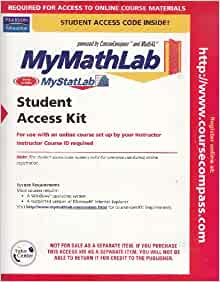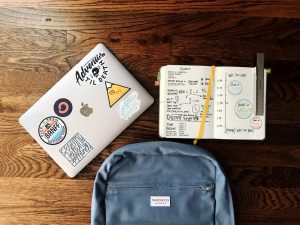With college back in session during COVID-19, maybe things aren’t quite what you expected. Are you locked down in your dorm room staring at a screen instead of going to classes? Locked in your dorm room at night instead of going out with your friends? Wearing a mask all day, and worried if you have to cough or sneeze in public? Yes the 2020 fall term is unlike any other in recent history, and might have you questioning even staying in school this semester. So you might ask yourself, can I get a refund for my tuition and other expenses?
Year: 2020
COVID 19 Textbook Buyers Guide: Buying and Selling Textbooks During a Pandemic
The COVID 19 pandemic has upended all aspects of our lives, and if you are a college student returning to school then textbooks are no exception. With many campus bookstores closed, your offline options are more limited than in the past but luckily your online options are better than ever so here goes:
COVID CRAZINESS
It is the ultimate cliche this year, but we really live in unprecedented times and there has never been a college semester like fall 2020. The news really comes fast and furious these days, so in an effort to bring you up to date on some of the noteworthy headlines we compiled a list of articles and subjects that really stand out.

College Finances in Crisis
The COVID-19 coronavirus pandemic is devastating lives, livelihoods, and personal, business, and government finances around the world. Unfortunately the American higher education market hasn’t escaped this economic destruction either. College and Universities are facing a perfect storm of reduced enrollments, reduced endowments, and increased expenses all at the same time.

Back to School 2020: Should you Stay or Should you Go?
The fall 2020 semester is going to be unlike any that has happened in modern history. With the covid 19 pandemic surging again, it’s now questionable whether or not classes will be held on campus. It’s looking increasingly likely that next year will be conducted through either a hybrid model of on campus and remote learning, or remote learning only.

Textbook Inclusive Access Codes: Savior or Scam?
As a college student, you’ve probably been assigned a textbook or two that has an “inclusive access” code. You may be wondering what is the inclusive access code, and why do more and more textbooks seem to have this code? As several recent lawsuits demonstrate, inclusive access is really more about generating recurring revenue and profits for textbook publishers than it is about generating improved academic outcomes for you.

Assistive Technologies Making College Education More Accessible
At present, approximately 20% of undergraduates have a disability, according to the National Center for Education Statistics. While notable headway has been made in recent years with regards to accessibility, many students living with physical and developmental disabilities are still finding it difficult to gain an inclusive college education. Educational institutions need to build more wheelchair ramps, widen more doorways and passages, and embrace assistive technologies more readily. These technologies can, after all, make a college education increasingly more accessible for students with disabilities. These devices and systems, of which the following are just a few examples, are all designed to increase, maintain, or improve the educational abilities of a college student with disabilities.

4 Books for Essay Writing You Need to Know About
It’s hard to write brilliantly without reading voraciously! To be a good academic writer and maintain writing skills, students need to accumulate tons of information and knowledge from reputable, authorized sources. And, given how unreliable the information from the web may be, the safest option to polish your writing is reading books by professional essay writers – from seasoned essayists, to young and talented writers from a popular essay writing service.
Can You Get a Refund for Tuition If Your Classes Were Cancelled?
The global COVID-19 pandemic has sent college students into a world of the unknown. As you were kicked out of your dorm room, you may have been wondering where you would land and how you would get there. Campuses were scrambling to close and all of the money you invested in tuition and fees was hanging in the balance. Now that the dust is settling, you may be wondering how you can recoup some of your costs. After all, you paid for an entire semester of on-campus living and learning.

4 Questions To Help You Know That An MBA Is Right For You
For years, the MBA program has remained the most popular master’s degree in the United States of America- until recently. In 2019, business school applications saw a steep decline by 9.1 percent, according to The Wall Street Journal. This decline did not necessarily signal the end of the MBA’s reign, however. Closer examination showed that many students were venturing overseas to pursue their master’s degree while others were reevaluating the popularly traveled path in lieu of other professional education alternatives. Regardless of the changes, the MBA continues to command attention in the professional world- increasing professional ranking and giving candidates an upper hand in the salary department. However, as with any postgraduate program, it is important that you ascertain whether an MBA is right for you, your career goals and your industry.

